Inscriptions
Browse the RIAo Corpus [http://oracc.museum.upenn.edu/riao/pager/]
1 2 3 4 5 6 7 8 9 10 11 12 13 14 15 16 17 1001
1
The present text is preserved on two clay tablets discovered at Kaneš (mod. Kültepe) and it appears to be a conflation (probably from a scholastic environment) of two different royal inscriptions -- lines 1-25 contain the first while lines 30b-74 contain the second -- with an insertion of the names of the "seven judges of the Mušlālum (or Step) Gate" placed between the two texts (lines 26-30a) (Landsberger and Balkan 1950, 220-222; Galter 1998, 21). The original copies of both inscriptions were most probably displayed/deposited in the Aššur Temple at Aššur.
The text can be divided into six parts: (1) Erišum's genealogy, which traces his ancestry back to the founder of the dynasty, his great-grandfather Puzur-Aššur I (lines 1-3); (2) a building account (lines 4-18), including helpful advice to future rulers with regard to restoring the clay nail (probably the object(s) on which the original inscriptions were written) and curses against anyone who fails to respect the "House of the Twin (Beer Vats)" (lines 19-25); (3) a list of the names of the seven judges of the Step Gate (lines 26-29); (4) a short passage praising the god Aššur (lines 30-34); (5) curses and blessings related to (juridical) behavior in the Step Gate (lines 35-58); and (6) further recommendations for how to treat clay nails when they are discovered.
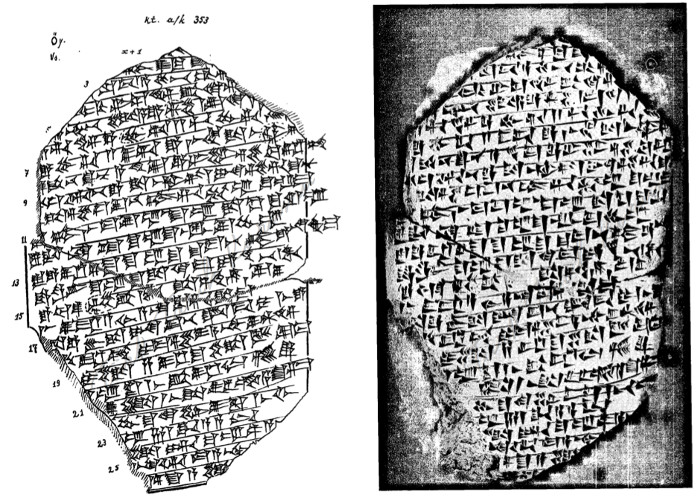
AMM 20139 (kt a/k 0353). Landsberger and Balkan, Belleten 14 pls. XVI, XXII.
As for the building report, it describes projects in the area of the Aššur temple, where, according to an earlier inscription, Erišum's grandfather Šalim-ahum claimed to have built a shrine at the request of the god Aššur himself (Šalim-ahum text no. 1 [http://oracc.museum.upenn.edu/riao/Q005618/]). Next to the temple, Erišum states that he built up a large area, the isāru (line 12; see also text nos. 2-7 and 9 [http://oracc.museum.upenn.edu/riao/Q005622,Q005623,Q005624,Q005625,Q005626,Q005627,Q005629/]), between the Sheep Gate and the People's Gate, in the western part of the city (Landsberger and Balkan 1950, 235-237; Larsen 1972, 62): the land was reserved specifically for this purpose. The extensive works of this ruler on the Aššur temple area included: (1) the building/restoration of the chapel (watmānum; line 5; see also text no. 4 [http://oracc.museum.upenn.edu/riao/Q005624/]); (2) the installation of a new throne decorated with a precious stone (ḫuāru, "hematite?"; line 7); (3) the setting up of new doors (lines 8 and 17; see also text no. 5 [http://oracc.museum.upenn.edu/riao/Q005625]); and (4) in another chapel, the "House of the Twin (Beer Vats)," which corresponds to the "House of the Brewing Vats" mentioned in Šalim-ahum's inscription [http://oracc.museum.upenn.edu/riao/Q005618/]), the installation and adorning of two (new) beer vats (lines 12-14; see also text nos. 3, 11 and 13 [http://oracc.museum.upenn.edu/riao/Q005623,Q005631,Q005633/]).
The other major building enterprise of Erišum appears to have been the construction of the "holy" (see the note to line 5) Mušlālum or Step Gate. This complex structure, which included a very large ceremonial stairway, was one of the gates of Aššur's most important temple and it provided access between the sacred area on the city's acropolis and the riverbank below (Andrae 1913, 63-67), as well as functioned as a principal city gate and a vestibule for the temple of the god Aššur. Furthermore, seven (divine) judges held court there, and it was also the site for some of the meetings of the city assembly (see the general introduction [http://oracc.museum.upenn.edu/riao/fromcolonytocitystate23341809bc/puzurashurdynasty/erishumi/index.html] to Erišum I and Hirsch 1972, 82: c/k 904, 4-6). Beside the list of names of the seven judges, lines 39-58 emphasize the legal importance of the Step Gate by citing curses for anyone who lied or gave false testimony in it and blessings for those who behaved properly. The section praising the god Aššur (lines 36-38) seems to be an oath formula spoken in the Step Gate and it recalls allusions to swearing by the "three phrases" in the documents from Kaneš (Landsberger/Balkan 1950, 262-64). As suggested by A.K. Grayson (1972, 19), it is possible that this text was read out on when judges were sworn in at Kaneš.
Access the composite text [http://oracc.museum.upenn.edu/riao/Q005621/] of Erišum I 01.
Bibliography
Further Liturature
2
This text was engraved on a stone door socket (BM 115689, Ass 16850) from Aššur and it describes some of Erišum's works on the Aššur Temple, namely those on the isāru, or temple area (see introduction to text no. 1) and on the city wall. The text devotes two passages to the temple area: one at the beginning, as part of the dedication ("(he) built the temple (and) all the temple area for the god Aššur, his lord, for his life and the life of his city"), and the second in the middle of the text, where the location of the isāru between the Sheep Gate and the People's Gate is mentioned. As for the wall, the text specifies that it had been originally built by Erišum's father Ilu-šūma [http://oracc.museum.upenn.edu/riao/fromcolonytocitystate/ilushumma/index.html], and that the renovation made it higher than it had been previously.

BM 115689. © The Trustees of the British Museum
The text (lines 20-25) also deals with the andurāru ("freedom"), or tax-exemption, of different goods, like silver, gold, copper, and tin, but also barley, wool, bran, and chaff (see introduction [http://oracc.museum.upenn.edu/riao/fromcolonytocitystate/ilushumma/index.html] to Ilu-šūma).
The final part of text contains curses against anyone who did not watch over and/or removed the ruler's works and his "(inscribed) tablet".
Access the composite text [http://oracc.museum.upenn.edu/riao/Q005622/] of Erišum I 02.
Bibliography
3
This text, which appears on numerous bricks found at Aššur, describes some of Erišum's building activities on and near the Aššur Temple, especially his work on the isāru, or temple area (lines 14-16; see introduction to text no. 1), and the installation and adorning of two (new) beer vats (lines 17-23; see also text nos. 1, 11 and 13 [http://oracc.museum.upenn.edu/riao/Q005621,Q005631,Q005633/]).
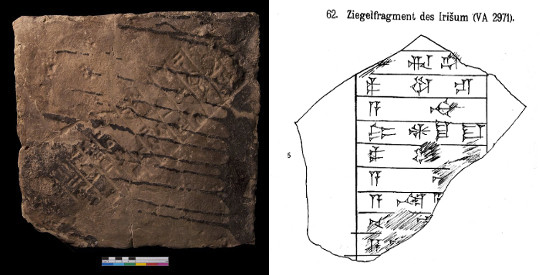
BM 90299. © The Trustees of the British Museum
Access the composite text [http://oracc.museum.upenn.edu/riao/Q005623/] of Erišum I 03.
Bibliography
4
This text, which is known from numerous bricks discovered in the Aššur temple at Aššur, deals with work on the temple of the god Aššur and the holy (see note to line 5 of text no. 1 [http://oracc.museum.upenn.edu/riao/Q005621/]) Mušlālum or Step Gate.
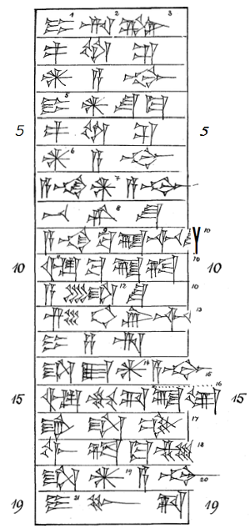
Ass 17747a-e. Schroeder, KAH 2 no. 5
Access the composite text [http://oracc.museum.upenn.edu/riao/Q005624/] of Erišum I 04.
Bibliography
5
This text is engraved on a brick discovered in the south corner of the central court of the Aššur temple at Aššur, and it mentions that Erišum worked on the isāru (temple area) and installed new doors in the gateways of Aššur's temple (see introduction to text no. 1).
Access the composite text [http://oracc.museum.upenn.edu/riao/Q005625/] of Erišum I 05.
Bibliography
6
Several bricks from Aššur are inscribed with an inscription recording work on the Aššur temple, in particular its temple area (isāru; see introduction to text no. 1).
Access the composite text [http://oracc.museum.upenn.edu/riao/Q005626/] of Erišum I 06.
Bibliography
7
This text, which is written on bricks found in the ruins of the Aššur temple, states that Erišum worked on the isāru, the so-called temple area (see introduction to text no. 1).
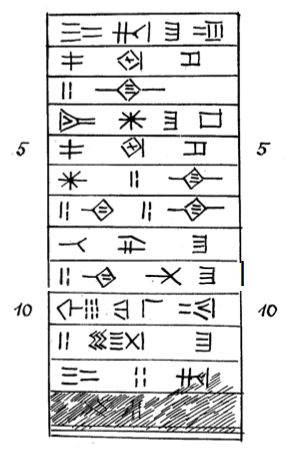
Ass 17747f. Schroeder, KAH 2 no. 9
Access the composite text [http://oracc.museum.upenn.edu/riao/Q005627/] of Erišum I 07.
Bibliography
8
A stone slab fragment found in the Aššur temple at Aššur, bears part of an inscription of Erišum, presumably one recording details about his work on the Aššur temple (see introduction to text no. 1).
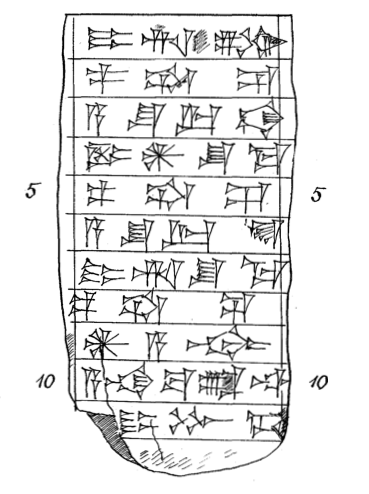
VA 05053. Schroeder, KAH 2 no. 6
Access the composite text [http://oracc.museum.upenn.edu/riao/Q005628/] of Erišum I 08.
Bibliography
9
This stone slab, which was discovered in the Aššur temple at Aššur, is inscribed with a text mentioning work on the isāru (temple area), an area located between the Sheep Gate and the People's Gate (see introduction to text no. 1).
Access the composite text [http://oracc.museum.upenn.edu/riao/Q005629/] of Erišum I 09.
Bibliography
10
Part of an Old Assyrian inscription describing building activities at Aššur is preserved on a fragmentarily preserved clay plaque. Because this text records the name of the god Aššur's shrine ("Wild Bull"), the inscription should probably be ascribed to Erišum, rather than to his father Ilu-šūma; Erišum text no. 1 [http://oracc.museum.upenn.edu/riao/Q005621/] also mentions the Wild Bull shrine.
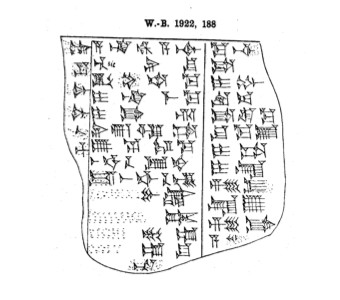
Ashm 1922, 188. Copy from Langdon, OECT 1 pl. 30.
Access the composite text [http://oracc.museum.upenn.edu/riao/Q005630/] of Erišum I 10.
Bibliography
11
This fragmentarily preserved inscription is known from a damaged clay plaque from Aššur (Aššur temple). The extant text records Erišum's expropriation of land between the Sheep Gate and the People's Gate in order to expand the isāru, the temple area of the Aššur temple. The inscription also mentions work on the House of the Twin (Beer Vats) (see introduction to text no. 1).
Access the composite text [http://oracc.museum.upenn.edu/riao/Q005631/] of Erišum I 11.
Bibliography
12
This poorly preserved text is engraved on two fragments of stone statue found in the ruins of the Aššur temple at Aššur.
Access the composite text [http://oracc.museum.upenn.edu/riao/Q005632/] of Erišum I 12.
Bibliography
13
This inscription, which records work on the House of the Twin (Beer Vats), is known from a single brick from the Aššur temple at Aššur (see introduction to text no. 1).
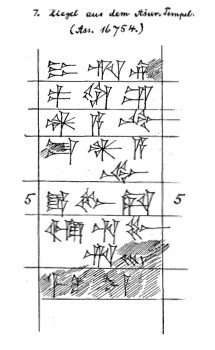
VA Ass 3212. Copy from Schroeder, KAH 2 no. 7.
Access the composite text [http://oracc.museum.upenn.edu/riao/Q005633/] of Erišum I 13.
Bibliography
14
Numerous bricks from Aššur are inscribed with two different texts recording that Erišum sponsored construction on the Adad temple. The longer of the two, text no. 14, not only includes a longer genealogy (tracing Erišum's ancestry back to the founder of the dynasty, his great-grandfather Puzur-Aššur I) and curses against anyone who would remove Erišum's "(inscribed) tablet," but also includes a longer description of the work on Adad's temple, including its temple area (isāru); text no. 15, the shorter of the two, records only that new doors were installed in the temple.
Despite the impression given in text no. 14, Erišum did not finish building Adad's temple by the time of his death and the task of completing it fell to his son and immediate successor, Ikūnum (see Ikūnum text no. 1 [http://oracc.museum.upenn.edu/riao/Q005639/]). Although no trace of this early temple to Adad has survived today, scholars believe that it may have been located in the area of the double Anu-Adad temple (first built by Samsī-Addu I) since objects bearing inscriptions of Erišum were found there.
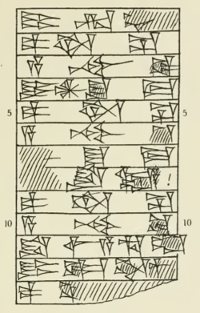
EȘEM 06618. Messerschmidt, KAH 1 no. 1
Access the composite text [http://oracc.museum.upenn.edu/riao/Q005634/] of Erišum I 14.
Bibliography
Further Liturature
15
See introduction to text no. 14.
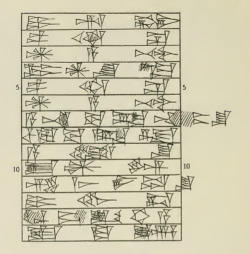
VA 06931. Messerschmidt, KAH 1 no. 60
Access the composite text [http://oracc.museum.upenn.edu/riao/Q005635/] of Erišum I 15.
Bibliography
16
A fragment of an inscribed mace head found at Aššur preserves part of a text recording that Erišum dedicated a mace to the god Adad. This is the only extant contemporary inscription of Erišum I (including his royal seals) where the ruler's name is spelled with an initial /e/ (e-ri-šu-ma), a spelling that otherwise only appears in royal inscriptions from the time of Samsī-Addu I (see texts nos. 1 [http://oracc.museum.upenn.edu/riao/Q005645/] and 3 [http://oracc.museum.upenn.edu/riao/Q005647/]). As noted by K. Veenhof (who does not consider this inscription to be part of the Erišum corpus; Veenhof AOLE, 40 n. 55), a spelling of this name with initial /e/ occurs in the names of traders who were namesakes of this ruler: see, for example, CCT 4 [http://www.hethport.uni-wuerzburg.de/altass/], 19b: 16 (but line 3 wit /i/).
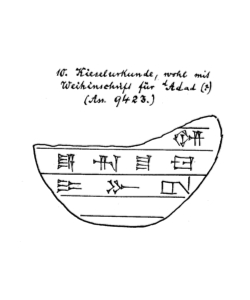
Ass 9423. Copy from Schroeder, KAH 2 no. 10.
Access the composite text [http://oracc.museum.upenn.edu/riao/Q005636/] of Erišum I 16.
Bibliography
17
The rim of a clay pot discovered at Aššur is impressed with one of Erišum's royal seals. The impressed inscription is in mirror writing, a phenomenon also attested at this time on clay tablets and envelopes found at Kaneš/Kültepe (see Meyer in Preusser, Paläste p. 11 n. 39).
Access the composite text [http://oracc.museum.upenn.edu/riao/Q005637/] of Erišum I 17.
Bibliography
1001
A damaged brick found at Aššur bears an inscription of an early Old Assyrian ruler, possibly Erišum I or one of his predecessors.
Access the composite text [http://oracc.museum.upenn.edu/riao/Q005638/] of Erišum I 1001.
Bibliography
Nathan Morello
Nathan Morello, 'Inscriptions', The Royal Inscriptions of Assyria online (RIAo) Project, The RIAo Project, a sub-project of MOCCI, 2021 [http://oracc.museum.upenn.edu/riao/fromcolonytocitystate23341809bc/puzurashurdynasty/erishumi/inscriptions/]